
Salamanca: The Golden City of Learning and Heritage
Explore Salamanca, Spain - A UNESCO World Heritage City Known for its Golden Architecture, Historic University, and Vibrant Plaza Mayor.
Salamanca, nestled in the heart of Spain, is a captivating city known for its rich history, academic heritage, and stunning architecture. This UNESCO World Heritage Site offers visitors a unique blend of ancient charm and vibrant modern life. The city's golden sandstone buildings glow in the sunlight, creating a picturesque setting that has inspired poets and artists for centuries. The University of Salamanca, founded in 1218, is one of the oldest universities in Europe and remains a hub of intellectual activity. Strolling through its historic campus, you can almost hear the echoes of famous scholars like Miguel de Unamuno. Don't miss the intricate details of the university's Plateresque facade, a masterpiece of Spanish Renaissance architecture. The Plaza Mayor, often considered one of the most beautiful squares in Spain, is the social heart of Salamanca. By day, it's a bustling hub of cafes and shops; by night, it transforms into a lively gathering place illuminated by soft, golden lights. Here, you can savor local delicacies such as hornazo and jamón ibérico while soaking in the vibrant atmosphere. Salamanca is also home to an array of museums, including the Art Nouveau and Art Deco Museum, as well as the impressive New and Old Cathedrals. The Old Cathedral, with its Romanesque architecture, contrasts beautifully with the Gothic and Baroque styles of the New Cathedral. Climb the towers for panoramic views of the city and the surrounding landscape. With its rich cultural heritage, vibrant student life, and stunning architecture, Salamanca offers an unforgettable experience for any traveler.
Local tips in Salamanca
- Visit the University of Salamanca's library and see the famous Astronomical Frieze, featuring a hidden frog you must find for good luck.
- Enjoy a coffee or meal in the Plaza Mayor, but be prepared for higher prices due to its popularity.
- Take a guided tour to fully appreciate the historical and architectural details of the cathedrals.
- Try the local specialty, hornazo, a savory pastry filled with meat, during your visit.
- Wear comfortable shoes, as the best way to explore Salamanca is on foot through its cobblestone streets.
Neighbourhoods in Salamanca
Salamanca: The Golden City of Learning and Heritage
Salamanca, nestled in the heart of Spain, is a captivating city known for its rich history, academic heritage, and stunning architecture. This UNESCO World Heritage Site offers visitors a unique blend of ancient charm and vibrant modern life. The city's golden sandstone buildings glow in the sunlight, creating a picturesque setting that has inspired poets and artists for centuries. The University of Salamanca, founded in 1218, is one of the oldest universities in Europe and remains a hub of intellectual activity. Strolling through its historic campus, you can almost hear the echoes of famous scholars like Miguel de Unamuno. Don't miss the intricate details of the university's Plateresque facade, a masterpiece of Spanish Renaissance architecture. The Plaza Mayor, often considered one of the most beautiful squares in Spain, is the social heart of Salamanca. By day, it's a bustling hub of cafes and shops; by night, it transforms into a lively gathering place illuminated by soft, golden lights. Here, you can savor local delicacies such as hornazo and jamón ibérico while soaking in the vibrant atmosphere. Salamanca is also home to an array of museums, including the Art Nouveau and Art Deco Museum, as well as the impressive New and Old Cathedrals. The Old Cathedral, with its Romanesque architecture, contrasts beautifully with the Gothic and Baroque styles of the New Cathedral. Climb the towers for panoramic views of the city and the surrounding landscape. With its rich cultural heritage, vibrant student life, and stunning architecture, Salamanca offers an unforgettable experience for any traveler.
When is the best time to go to Salamanca?
Iconic landmarks you can’t miss
Salamanca Cathedral
Discover the stunning Salamanca Cathedral, a blend of Gothic and Baroque architecture in the heart of Spain's historic city.
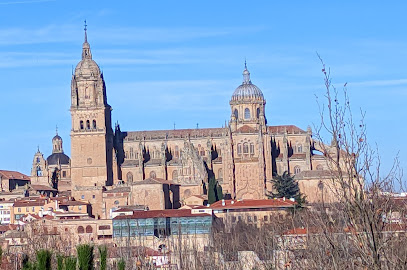
Puente Romano de Salamanca
Discover the stunning Puente Romano de Salamanca, a historic bridge that connects you to the rich heritage and breathtaking views of this UNESCO World Heritage city.
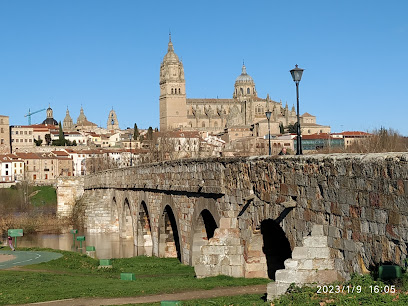
Museo Art Nouveau y Art Déco - Casa Lis
Explore the exquisite world of Art Nouveau and Art Deco at Casa Lis, an architectural gem in Salamanca, showcasing stunning collections and cultural treasures.
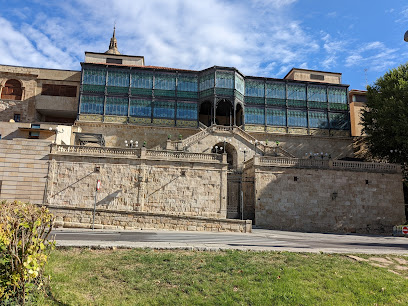
Plaza Mayor de Salamanca
Experience the grandeur of Plaza Mayor de Salamanca, a stunning baroque square bustling with culture, history, and vibrant local life.
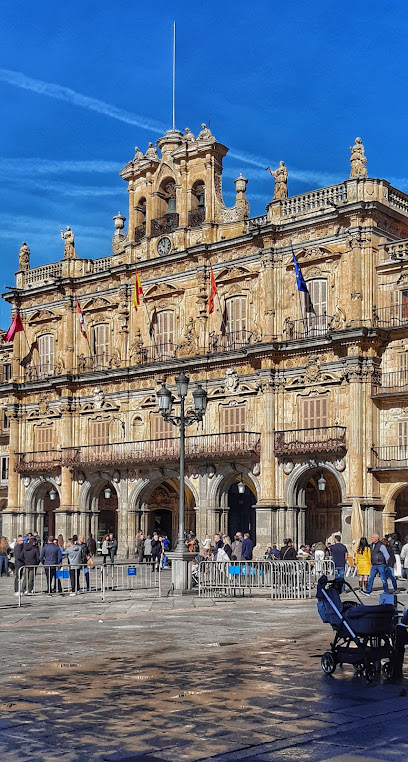
Salamanca Central Market
Explore the vibrant Salamanca Central Market, a must-visit destination for food lovers and culture enthusiasts, showcasing the best of local gastronomy.
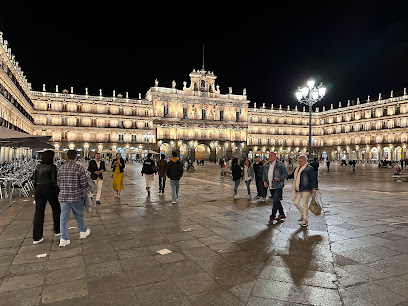
Convent of San Esteban
Discover the architectural splendor and rich history of the Convent of San Esteban, a must-visit landmark in Salamanca, Spain.
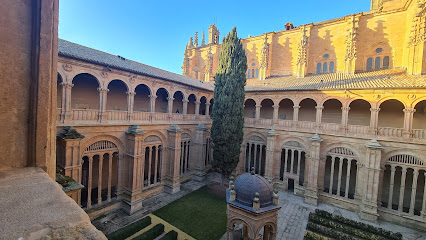
Casa de las Conchas
Discover the architectural marvel of Casa de las Conchas in Salamanca, a historical site and library combining culture and beauty in one location.

Cuzco Bodega - Salamanca
Experience the vibrant flavors of Spain at Cuzco Bodega, Salamanca's premier tapas bar, perfect for food lovers and cultural enthusiasts.
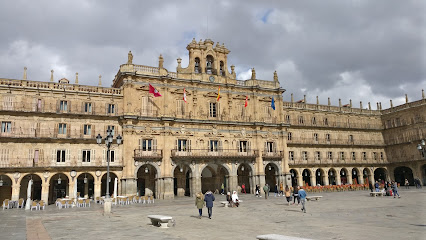
El Figón Charro
Experience authentic Spanish cuisine and vibrant bar culture at El Figón Charro, Salamanca's must-visit dining destination for culinary enthusiasts.

Frog Salamanca
Explore the architectural beauty and rich history of Frog Salamanca, a must-visit tourist attraction in the heart of Salamanca, Spain.
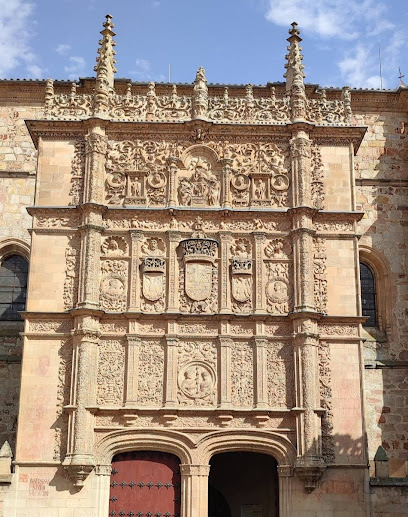
Monterrey's palace
Explore Monterrey's Palace: A Historic Jewel in Salamanca, Blending Renaissance and Baroque Architecture with Rich Spanish Heritage.

Cueva de Salamanca
Explore the enchanting Cueva de Salamanca, an archaeological treasure where history and legend intertwine in the heart of Spain.
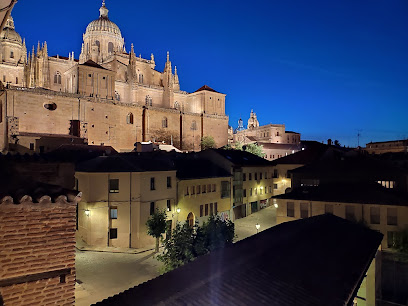
St. Patrick's Irish Pub
Discover the lively St. Patrick's Irish Pub in Salamanca, where Irish charm meets German flavors for an unforgettable dining experience.
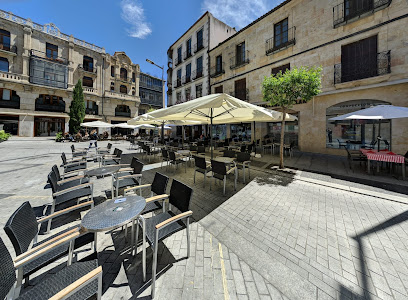
University of Salamanca
Discover the University of Salamanca, a UNESCO World Heritage site, blending rich history, stunning architecture, and vibrant academic life in Spain.
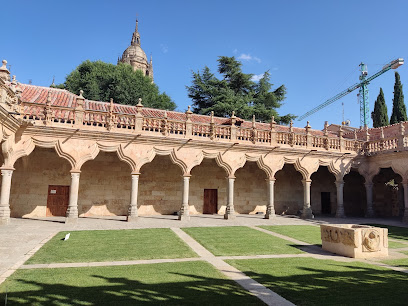
Hotel NH Collection Salamanca Palacio de Castellanos
Discover luxury and historic charm at NH Collection Salamanca Palacio de Castellanos, ideally located for exploring the rich culture of Salamanca.
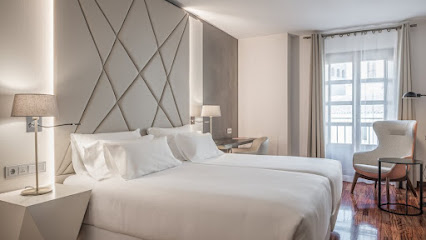
Unmissable attractions to see
Huerto de Calixto y Melibea
Discover the romantic charm of Huerto de Calixto y Melibea, a historic garden in Salamanca that beautifully blends nature and literature.
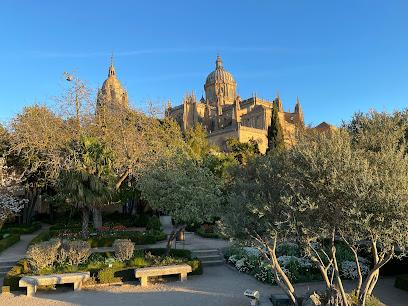
Museo Art Nouveau y Art Déco - Casa Lis
Explore Casa Lis in Salamanca, a remarkable art museum showcasing exquisite Art Nouveau and Art Deco collections in a stunning historical setting.
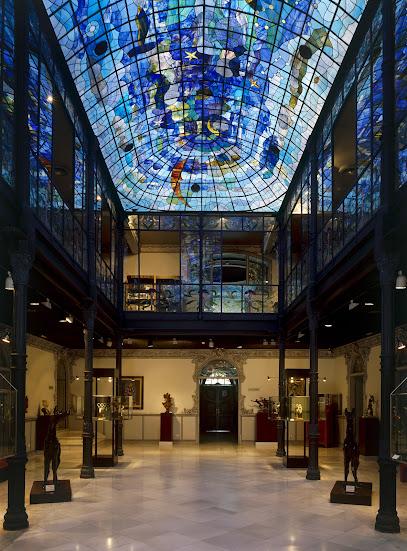
Plaza Mayor de Salamanca
Explore the architectural splendor and vibrant atmosphere of Plaza Mayor, Salamanca's iconic square and cultural heart.
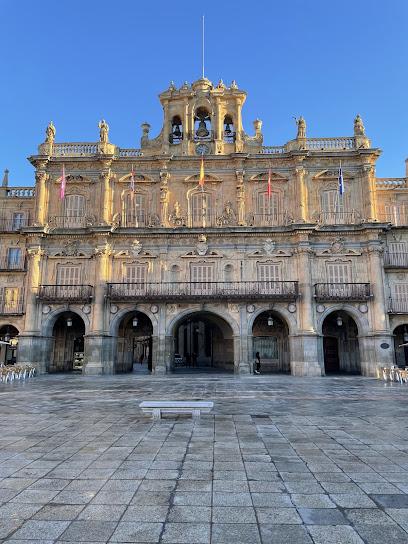
Museum of Automotive History
Explore the fascinating evolution of automobiles at the Museum of Automotive History in Salamanca, where vintage meets innovation in a captivating journey.
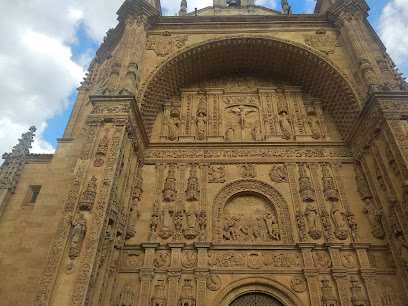
Convent of San Esteban
Explore the Convent of San Esteban, a stunning historical landmark in Salamanca rich in architecture and cultural significance.
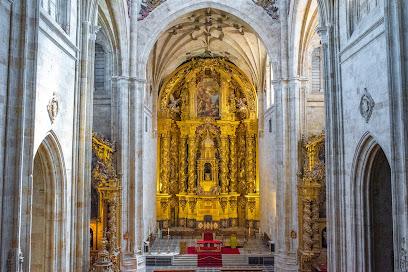
La Alamedilla
Experience tranquility and nature at La Alamedilla, Salamanca's beloved urban park, perfect for relaxation and outdoor fun.
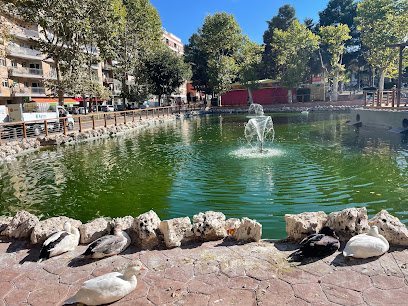
Casa de las Conchas
Explore the architectural beauty and cultural significance of Casa de las Conchas, a historic gem in Salamanca, Spain, blending literature and history.

Parque Picasso
Explore the lush beauty and artistic charm of Parque Picasso, a serene urban oasis in the heart of Salamanca, perfect for relaxation and cultural immersion.
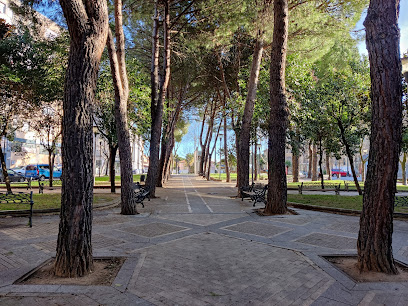
Monterrey's palace
Discover the architectural beauty and historical significance of Monterrey's Palace, a must-see landmark in the heart of Salamanca, Spain.

Cueva de Salamanca
Explore the enchanting Cueva de Salamanca, a mystical open-air museum and archaeological site filled with history, legends, and stunning geological formations.
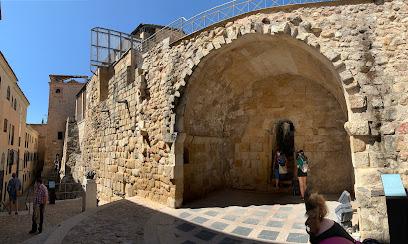
University of Salamanca
Explore the University of Salamanca, Spain's oldest university, where history, architecture, and vibrant student life intertwine in a UNESCO World Heritage city.
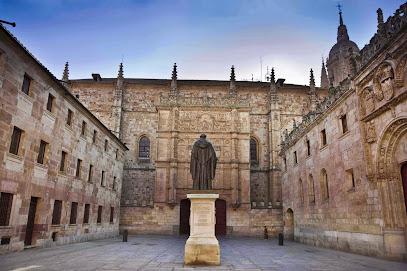
Anaya Palace
Explore the historical charm of Anaya Palace in Salamanca, a stunning neoclassical landmark surrounded by serene gardens.
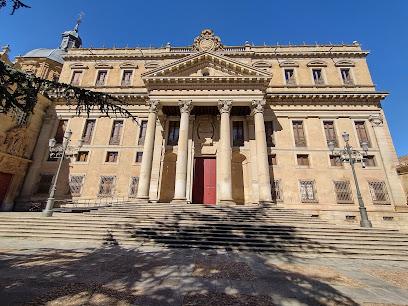
Ieronimus Tower (Old Cathedral)
Discover the breathtaking views and rich history of Salamanca at Ieronimus Tower, an iconic attraction of the Old Cathedral.
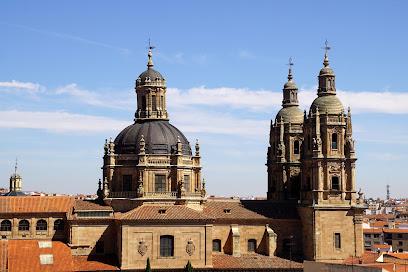
Palacio de la Salina
Explore the architectural beauty and historical significance of the Palacio de la Salina in the heart of Salamanca, Spain.
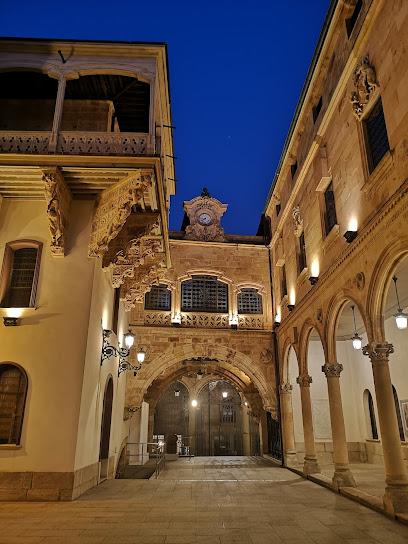
Pozo de las Nieves
Explore the historic Pozo de las Nieves in Salamanca, a stunning archaeological site that reveals the region's rich cultural heritage amidst beautiful landscapes.
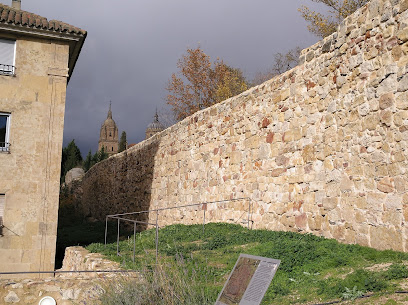
Essential places to dine
Bambú Tapas y Brasas
Discover authentic Spanish flavors at Bambú Tapas y Brasas – where vibrant atmosphere meets delicious tapas in Salamanca.
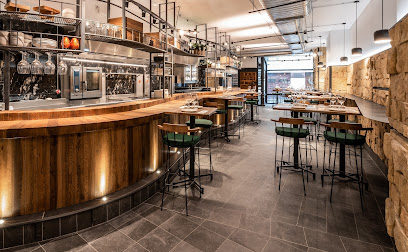
Mesón Cervantes
Experience authentic Spanish cuisine at Mesón Cervantes in Salamanca – where tradition meets flavor in a cozy atmosphere.
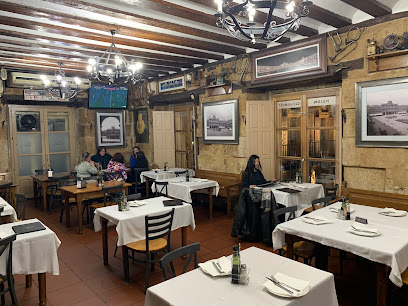
CASA PACA Salamanca
Experience authentic Spanish cuisine at CASA PACA in Salamanca - where tradition meets modernity for an unforgettable dining experience.
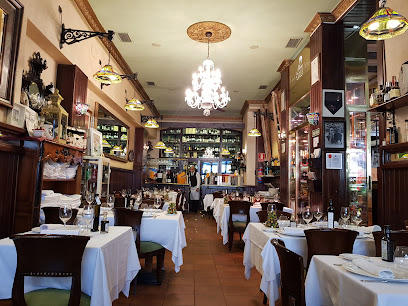
La Pepita Burger Bar - Salamanca
Discover gourmet burgers and a lively atmosphere at La Pepita Burger Bar in Salamanca – a culinary delight for every burger lover.
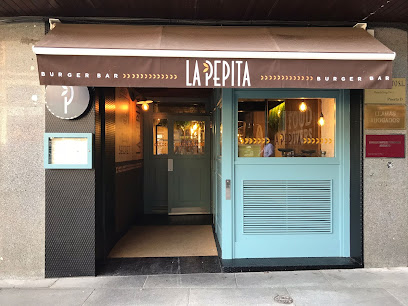
RESTAURANTE ISIDRO
Experience authentic Castilian and Mediterranean flavors at Restaurante Isidro in Salamanca, where every meal is a celebration of Spanish culinary traditions.
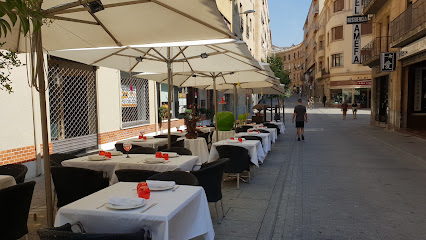
Mesón Los Faroles
Discover authentic Spanish tapas and cider at Mesón Los Faroles - where tradition meets flavor in the heart of Salamanca.
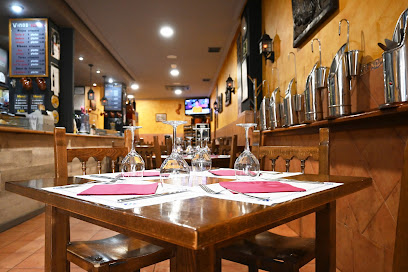
RESTAURANTE LA HOJA 21
Discover exquisite Mediterranean flavors at Restaurante La Hoja 21 in Salamanca - a culinary haven for travelers seeking authentic dining experiences.

Restaurante El Mesón de Gonzalo
Experience authentic Mediterranean and Spanish cuisine at Restaurante El Mesón de Gonzalo in Salamanca - a culinary delight not to be missed.
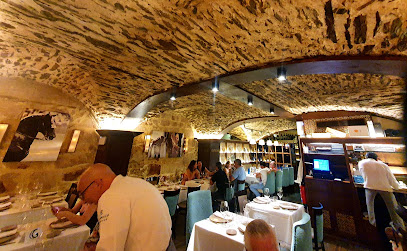
TAPAS 3.0
Experience authentic Spanish flavors at TAPAS 3.0 in Salamanca – where tradition meets innovation in every bite.
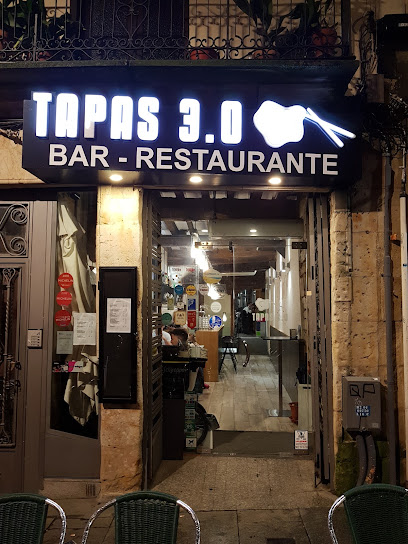
Cuzco Bodega - Salamanca
Experience the essence of Spanish cuisine at Cuzco Bodega - A vibrant tapas bar in Salamanca offering delicious dishes and local wines.
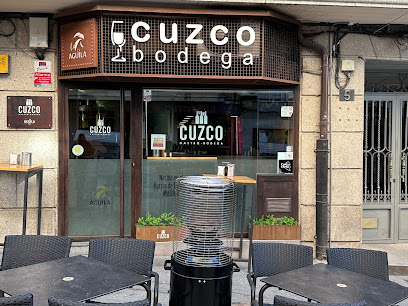
El Figón Charro
Discover authentic Spanish cuisine at El Figón Charro in Salamanca - where tradition meets flavor in every bite.
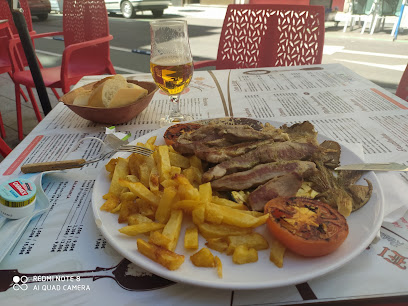
Restaurante Tapería Lío Salamanca
Discover the vibrant flavors of Mediterranean cuisine at Restaurante Tapería Lío in Salamanca - where every meal is a celebration.
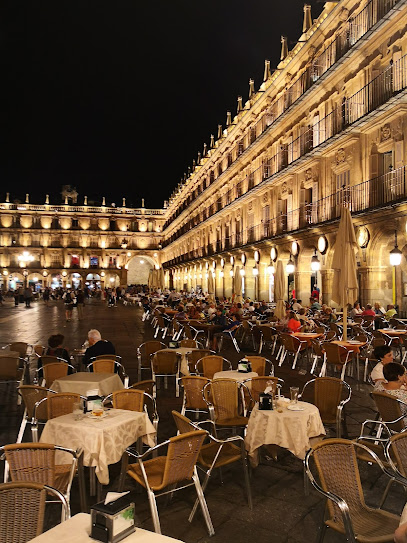
Restaurante La Tagliatella | Salamanca
Experience authentic Italian dining at Restaurante La Tagliatella in Salamanca – where every dish tells a story of tradition and flavor.
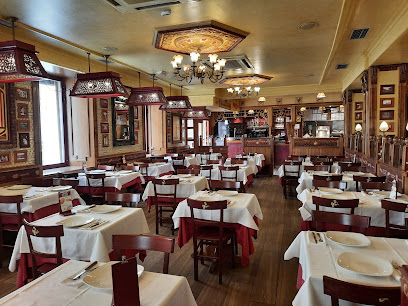
El Bardo Centro
Discover the essence of Spanish cuisine at El Bardo Centro in Salamanca - a haven for food lovers seeking authentic Mediterranean flavors.
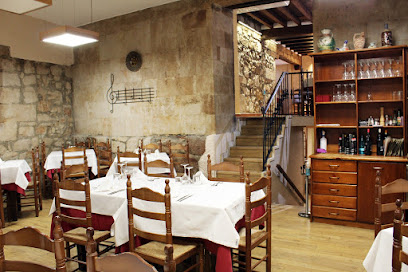
RESTAURANTE CORTE Y CATA
Experience authentic Spanish cuisine at Restaurante Corte y Cata in Salamanca – where tradition meets modern dining excellence.
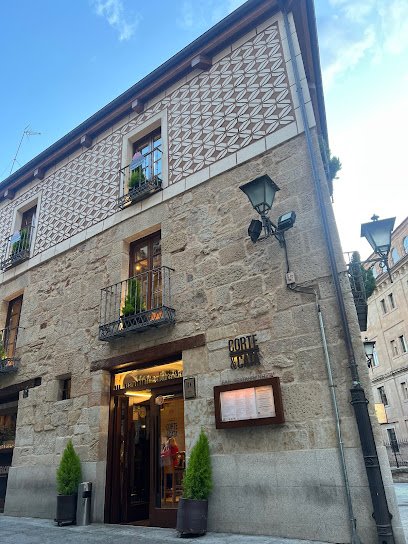
Markets, malls and hidden boutiques
Flying Tiger Copenhagen
Explore the colorful world of Flying Tiger Copenhagen in Salamanca, where every corner reveals delightful gifts and unique treasures for everyone.
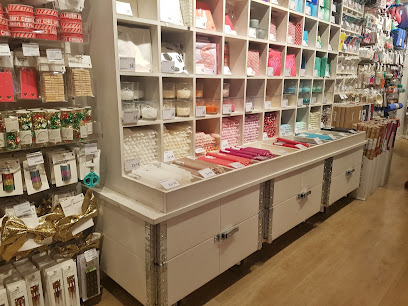
ALE-HOP
Explore ALE-HOP in Salamanca for unique gifts, stylish accessories, and a vibrant shopping experience that captures the essence of Spanish culture.
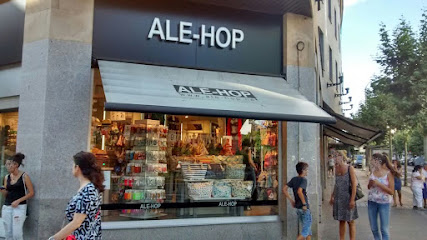
Centro Comercial Vialia Salamanca
Explore the Centro Comercial Vialia Salamanca: A dynamic shopping mall with diverse stores, family-friendly activities, and delightful dining options.
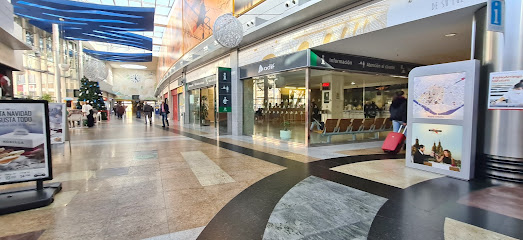
Bershka
Explore the trendy world of Bershka in Salamanca, your destination for stylish clothing, shoes, and accessories for every occasion.
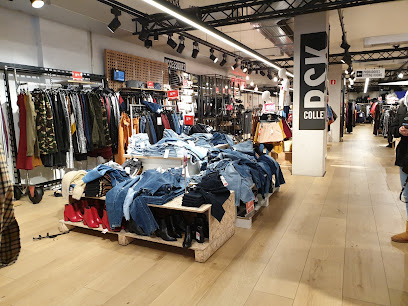
Stradivarius
Discover the latest women's fashion at Stradivarius in Salamanca, a stylish and affordable shopping destination for every trendsetter.

Zap+Zap
Explore Zap+Zap in Salamanca for unique gifts and home goods that capture the spirit of Spain with every purchase.

Señorita Naif
Discover unique costume jewelry and stylish women's clothing at Señorita Naif, where Salamanca's creative spirit shines through every piece.
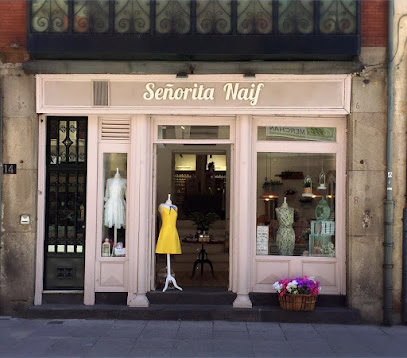
▷ El Armario del Oeste - Ropa Segunda Mano en Salamanca - Vintage clothes
Explore El Armario del Oeste in Salamanca for unique vintage clothing and accessories that tell a story while promoting sustainable fashion.
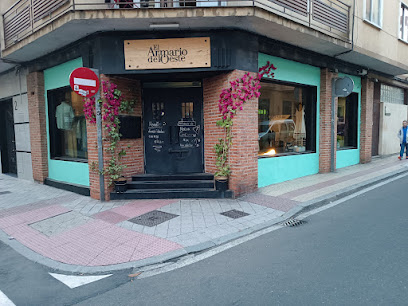
CASA Salamanca
Explore CASA Salamanca for unique gifts and home essentials that reflect the charm of Spain, perfect for tourists seeking memorable treasures.
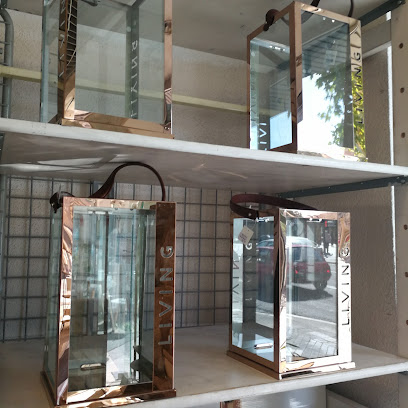
Vistelatierra
Discover unique vintage treasures at Vistelatierra, Salamanca's premier destination for sustainable fashion and eco-friendly shopping.
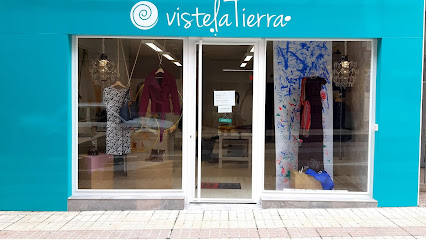
Natura
Discover unique gifts and fashion accessories at Natura, a charming gift shop in Salamanca that showcases local artisans and their creations.
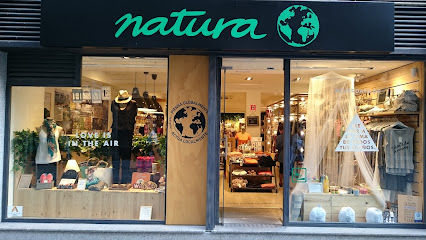
Mercatus
Explore Mercatus in Salamanca for unique gifts and souvenirs that embody the spirit of Spain and its rich cultural heritage.
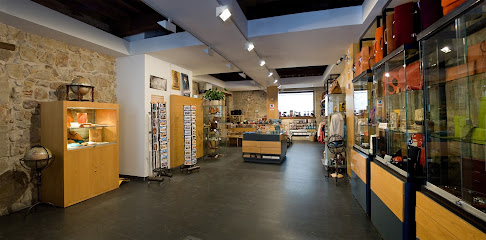
Boutique Libra
Discover unique fashion at Boutique Libra, Salamanca's premier dress store, offering personalized service and a curated selection of stylish attire.
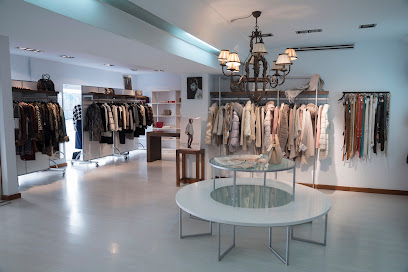
Boutique PANDORA
Explore Boutique PANDORA in Salamanca for exquisite jewelry and unique fashion accessories that capture the city's charm.
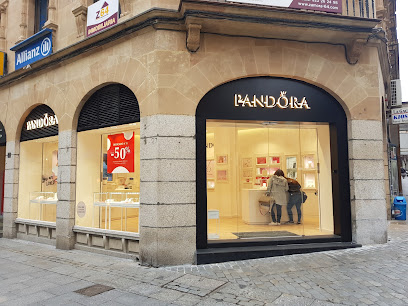
Regalos Karma
Explore Regalos Karma in Salamanca for unique gifts and authentic souvenirs, celebrating local artisans and the essence of Spanish culture.
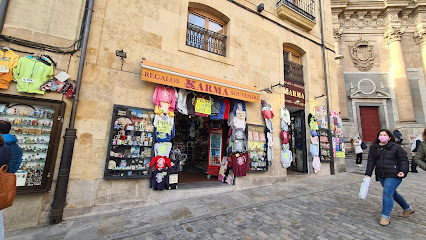
Essential bars & hidden hideouts
Vinodiario
Explore the flavors of Salamanca at Vinodiario, where exquisite wines meet authentic Spanish dishes in a lively bar atmosphere.
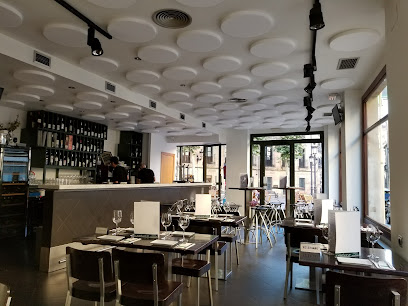
The Holy Cross
Experience the authentic taste and warm atmosphere of Irish culture at The Holy Cross, a beloved pub in the heart of Salamanca.
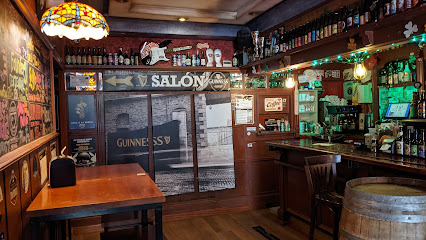
St. Patrick's Irish Pub
Discover the vibrant spirit of Ireland at St. Patrick's Irish Pub, where hearty cuisine and lively atmosphere create unforgettable moments.
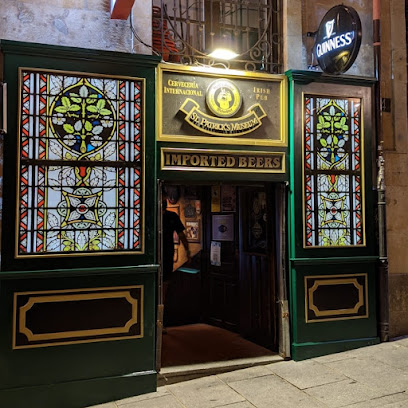
O'HARA'S IRISH PUB
Experience the warmth of Irish hospitality at O'Hara's Irish Pub in Salamanca, where great food, drinks, and live entertainment await.
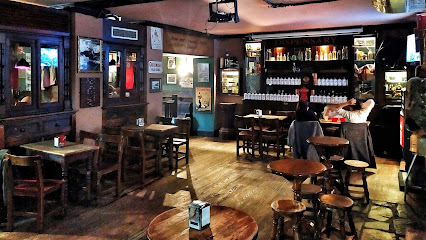
Cervecería El Parque
Discover the lively Cervecería El Parque in Salamanca, a top destination for great beer, delicious food, and a vibrant atmosphere.
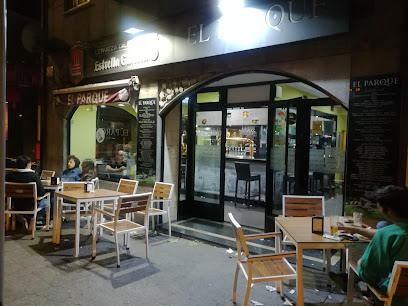
Niebla Cocktail Bar
Discover the vibrant atmosphere and exquisite cocktails at Niebla Cocktail Bar, Salamanca's premier destination for nightlife and live music.
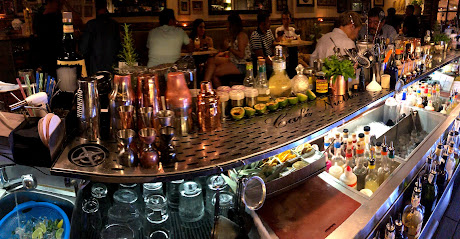
The doctor coctail
Experience the vibrant nightlife of Salamanca at The Doctor Cocktail, where innovative drinks meet lively ambiance in a stylish setting.
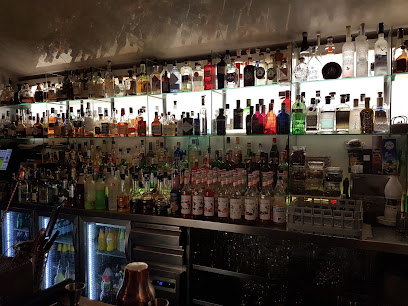
Gran Tasca Bar Manzano
Discover the lively Gran Tasca Bar Manzano in Salamanca, where authentic tapas and friendly vibes create a memorable bar experience.
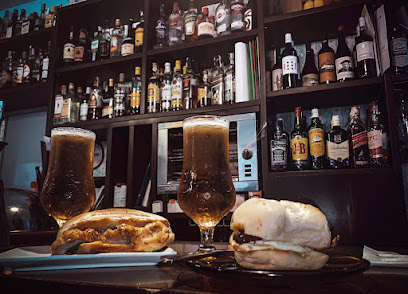
Pub La Perla Negra Irish Club - Salamanca
Discover the lively ambiance of Pub La Perla Negra, an Irish pub in Salamanca offering great drinks, entertainment, and a welcoming atmosphere for all.
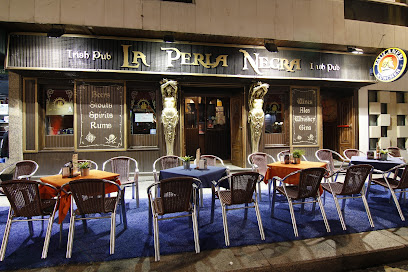
Pub pakipalla - Salamanca
Immerse yourself in the lively atmosphere of Pub Pakipalla, Salamanca's favorite spot for drinks and socializing with locals and fellow travelers.
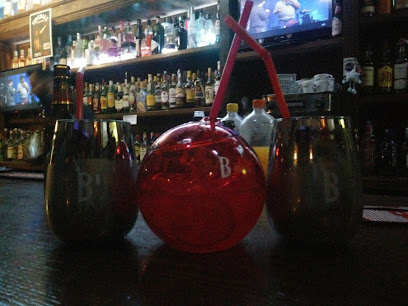
Gatsby - Salamanca
Experience the vibrant ambiance and diverse drink selection at Gatsby, Salamanca's lively pub that captures the city's spirit.
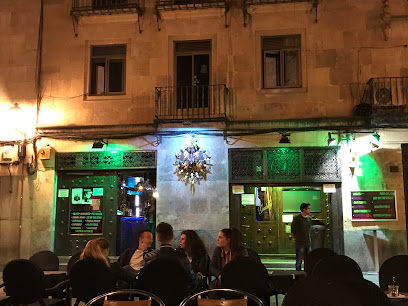
Vintage Cocktail Bar
Experience the charm of Salamanca at Vintage Cocktail Bar, where expertly crafted cocktails meet a unique, inviting atmosphere.
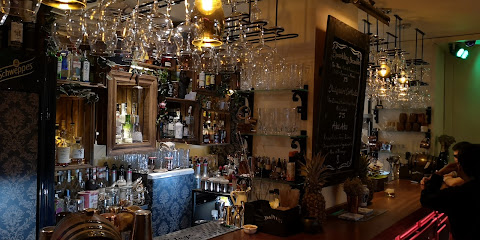
Bar Molly Malone
Experience the vibrant atmosphere and authentic Spanish drinks at Bar Molly Malone, a must-visit bar in Salamanca for a memorable night out.
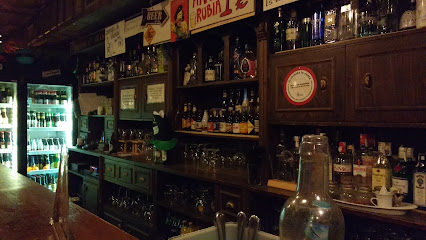
Grand Hotel Premium Champagne Bar
Experience unparalleled luxury and exquisite champagne selections at the Grand Hotel Premium Champagne Bar in Salamanca.
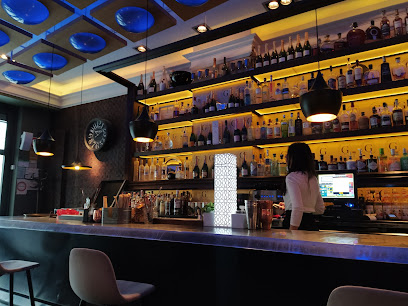
PUBEER
Experience the vibrant nightlife at PUBEER, Salamanca's premier pub for great drinks, dancing, and unforgettable moments.
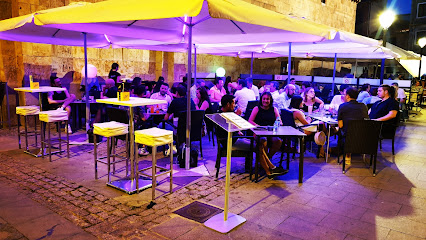
Local Phrases
-
- HelloHola
[oh-la] - GoodbyeAdiós
[ah-dee-ohs] - YesSí
[see] - NoNo
[noh] - Please/You're welcomePor favor/De nada
[por fah-vor/deh nah-dah] - Thank youGracias
[grah-thyas] - Excuse me/SorryPerdón/Lo siento
[pehr-dohn/loh syen-toh] - How are you?¿Cómo estás?
[koh-moh ehs-tahs] - Fine. And you?Bien. ¿Y tú?
[byen. ee too] - Do you speak English?¿Hablas inglés?
[ah-blahs een-glehs] - I don't understandNo entiendo
[noh ehn-tyen-doh]
- HelloHola
-
- I'd like to see the menu, pleaseMe gustaría ver la carta, por favor
[meh goos-tah-ree-ah behr lah kahr-tah, por fah-vor] - I don't eat meatNo como carne
[noh koh-moh kahr-neh] - Cheers!¡Salud!
[sah-loohd] - I would like to pay, pleaseMe gustaría pagar, por favor
[meh goos-tah-ree-ah pah-gahr, por fah-vor]
- I'd like to see the menu, pleaseMe gustaría ver la carta, por favor
-
- Help!¡Ayuda!
[ah-yoo-dah] - Go away!¡Vete!
[beh-teh] - Call the Police!¡Llama a la Policía!
[yah-mah ah lah poh-lee-thee-ah] - Call a doctor!¡Llama a un médico!
[yah-mah ah oon meh-dee-koh] - I'm lostEstoy perdido/a
[ehs-toy pehr-dee-doh/ah] - I'm illEstoy enfermo/a
[ehs-toy ehn-fehr-moh/ah]
- Help!¡Ayuda!
-
- I'd like to buy...Me gustaría comprar...
[meh goos-tah-ree-ah kohm-prahr] - I'm just lookingSolo estoy mirando
[soh-loh ehs-toy mee-rahn-doh] - How much is it?¿Cuánto cuesta?
[kwan-toh kwehs-tah] - That's too expensiveEs demasiado caro
[ehs deh-mah-syah-doh kah-roh] - Can you lower the price?¿Puede bajar el precio?
[pweh-deh bah-har ehl pree-thyo]
- I'd like to buy...Me gustaría comprar...
-
- What time is it?¿Qué hora es?
[keh oh-rah ehs] - It's one o'clockEs la una
[ehs lah oo-nah] - Half past (10)Las diez y media
[lahs dyehs ee meh-dee-ah] - MorningMañana
[mah-nyah-nah] - AfternoonTarde
[tahr-deh] - EveningNoche
[noh-cheh] - YesterdayAyer
[ah-yehr] - TodayHoy
[oy] - TomorrowMañana
[mah-nyah-nah] - 1Uno
[oo-noh] - 2Dos
[dohs] - 3Tres
[trehs] - 4Cuatro
[kwah-troh] - 5Cinco
[theen-koh] - 6Seis
[says] - 7Siete
[sye-teh] - 8Ocho
[oh-choh] - 9Nueve
[nweh-veh] - 10Diez
[dyehs]
- What time is it?¿Qué hora es?
-
- Where's a/the...?¿Dónde está...?
[dohn-deh ehs-tah] - What's the address?¿Cuál es la dirección?
[kwal ehs lah dee-rehk-thyon] - Can you show me (on the map)?¿Puedes enseñarme (en el mapa)?
[pweh-dehs ehn-seh-nyar-meh (ehn ehl mah-pah)] - When's the next (bus)?¿Cuándo es el próximo (autobús)?
[kwan-doh ehs ehl proh-ksee-moh (ow-toh-boos)] - A ticket (to ....)Un billete (para ....)
[oon bee-yeh-teh (pah-rah)]
- Where's a/the...?¿Dónde está...?
History of Salamanca
-
Salamanca's history dates back to the pre-Roman era, with evidence of early settlements by the Vettones, a Celtic tribe. The city gained prominence under Roman rule as 'Helmantica.' Key remnants of Roman influence include the Roman Bridge over the Tormes River, which served as a crucial link on the Silver Route, facilitating trade and movement.
-
In the early Middle Ages, Salamanca became an important center in the Kingdom of León. The city's strategic location made it a focal point for military and political maneuvers. The construction of the Old Cathedral, initiated in the 12th century, and the fortification of the city’s walls marked significant developments during this period.
-
The University of Salamanca, founded in 1218 by King Alfonso IX of León, became one of the oldest and most prestigious universities in Europe. It played a pivotal role in the intellectual and cultural life of Spain, attracting scholars and students from across the continent. The university's magnificent Plateresque architecture, epitomized by its ornate façade, stands as a testament to its historical significance.
-
During the Spanish Golden Age, Salamanca flourished as a center of learning and culture. The city's architectural landscape transformed with the construction of the New Cathedral, started in the 16th century, and the rise of the Plaza Mayor, a quintessential example of Baroque urban design. This period also saw the flourishing of literary and philosophical thought, with figures like Fray Luis de León contributing to its rich intellectual heritage.
-
Salamanca's strategic importance continued into the 19th century during the Peninsular War. The Battle of Salamanca in 1812 was a decisive engagement where the Duke of Wellington's forces defeated Napoleon's troops, influencing the outcome of the war. The subsequent centuries saw significant modernization efforts, balancing the preservation of its historical legacy with contemporary development.
-
In 1988, Salamanca was declared a UNESCO World Heritage Site, recognizing its exceptional blend of historical and architectural treasures. The city remains a vibrant cultural hub, celebrating its heritage through festivals, academic pursuits, and a thriving arts scene. Notable landmarks include the Casa de las Conchas, the Clerecía, and the Convento de San Esteban, each contributing to Salamanca’s enduring legacy.
Salamanca Essentials
-
Salamanca is well-connected by various modes of transportation. The nearest major airport is Madrid-Barajas Adolfo Suárez Airport (MAD), approximately 220 kilometers away. From Madrid, you can take a direct train (Renfe) to Salamanca, with the journey typically taking around 1.5 to 2 hours. Alternatively, you can take a bus from Madrid's Estación Sur de Autobuses, which takes around 2.5 to 3 hours. If you prefer driving, you can rent a car and enjoy a scenic drive via the A-50 highway.
-
Salamanca is a compact city, making it easy to explore on foot. For longer distances, the city offers a reliable public bus system operated by Salamanca de Transportes (SAL). Taxis are readily available and can be hailed on the street or booked through various apps. For those looking to explore the surrounding areas, car rentals are available. Bicycles can also be rented for a more eco-friendly way to get around.
-
The official currency in Spain is the Euro (EUR). Credit and debit cards are widely accepted in hotels, restaurants, and shops. ATMs are abundant throughout Salamanca, making it easy to withdraw cash. However, it is advisable to carry some cash for smaller establishments, local markets, and public transportation. Currency exchange services are available at major banks and exchange offices.
-
Salamanca is generally a safe city for tourists. However, like any popular destination, it is wise to take standard precautions. Avoid displaying valuable items and be aware of pickpockets, especially in crowded areas such as Plaza Mayor and around the University. The neighborhoods of Barrio del Oeste and El Rollo are generally safe, but it is advisable to stay alert at night. Always use well-lit and populated routes when walking after dark.
-
In case of emergency, dial 112 for immediate assistance. This number connects you to police, fire, and medical services. The main hospital in Salamanca is Hospital Universitario de Salamanca, which provides comprehensive medical care. Pharmacies (farmacias) are plentiful and can provide over-the-counter medications and advice. It is highly recommended to have travel insurance that covers medical emergencies.
-
Fashion: Do dress smartly, especially when visiting religious sites or dining in upscale restaurants. Avoid overly casual or revealing clothing. Religion: Do respect local customs; always dress modestly and cover your shoulders and knees when entering churches. Public Transport: Do be courteous; give up your seat to elderly passengers and avoid loud conversations. Don't eat or drink on public transport. Greetings: Do greet people with a handshake; a kiss on each cheek is also common among friends. Eating & Drinking: Do try local delicacies and accept food offerings graciously. Don't rush your meal; dining is considered a leisurely and social activity.
-
To experience Salamanca like a local, visit the Mercado Central for fresh produce and local specialities. Take a stroll through the historic Barrio del Oeste to see colorful street art. Engage with locals at traditional tapas bars, where you can enjoy small dishes and local wines. Don't miss the chance to see a performance at the Teatro Liceo or a local festival such as the Salamanca Fair in September. For a unique experience, attend a lecture or event at the University of Salamanca, one of the oldest universities in the world.
Trending Landmark in Salamanca
-
Salamanca Cathedral
-
Puente Romano de Salamanca
-
Museo Art Nouveau y Art Déco - Casa Lis
-
Plaza Mayor de Salamanca
-
Salamanca Central Market
-
Convent of San Esteban
-
Casa de las Conchas
-
Cuzco Bodega - Salamanca
-
El Figón Charro
-
Frog Salamanca
-
Monterrey's palace
-
Cueva de Salamanca
-
St. Patrick's Irish Pub
-
University of Salamanca
-
Hotel NH Collection Salamanca Palacio de Castellanos
Nearby Cities to Salamanca
-
Things To Do in Avila
-
Things To Do in Valladolid
-
Things To Do in Bragança
-
Things To Do in Segovia
-
Things To Do in Chaves
-
Things To Do in Madrid
-
Things To Do in Vila Real
-
Things To Do in Lamego
-
Things To Do in Toledo
-
Things To Do in Burgos
-
Things To Do in Guimarães
-
Things To Do in Braga
-
Things To Do in Coimbra
-
Things To Do in Porto
-
Things To Do in Aveiro

















